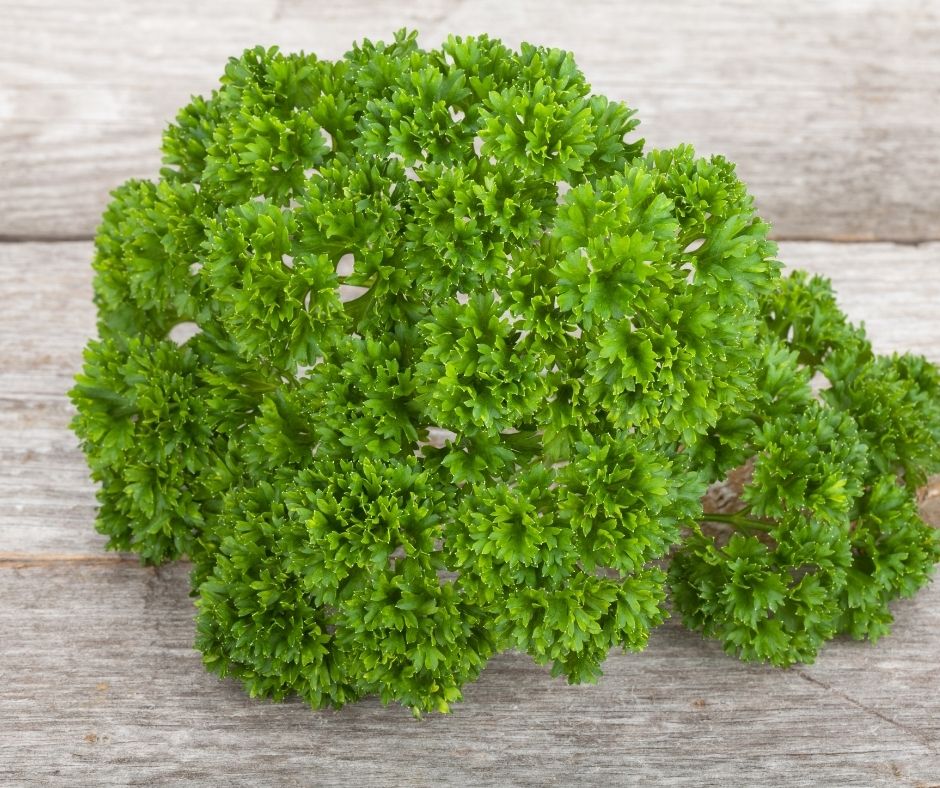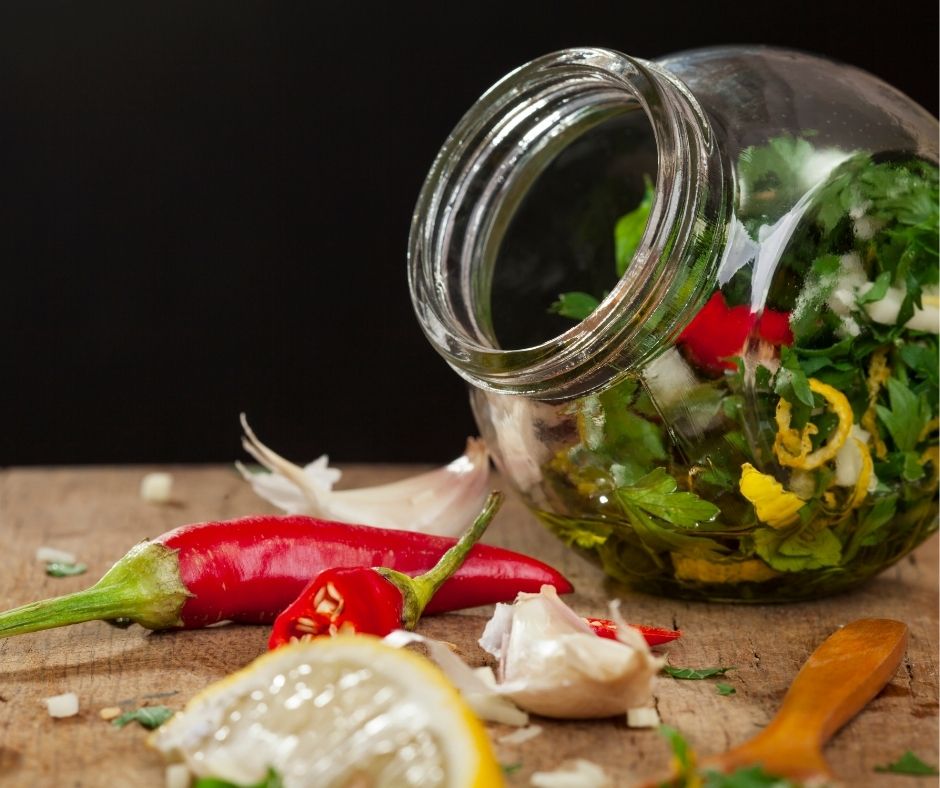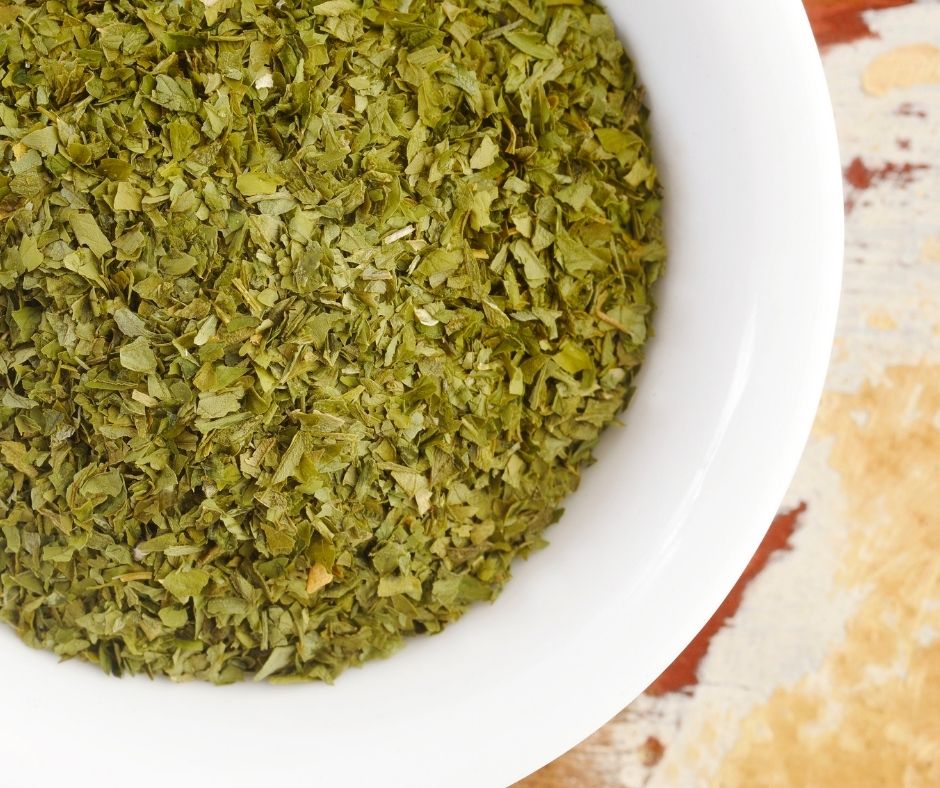Flat Leaf vs. Curly-Leaf Parsley
When you go shopping for parsley, you should be able to differentiate Italian Parsley vs. Parsley. Parsley is one of the most-used culinary herbs worldwide.
In the market, you will find flat-leaved parsley and curly-leafed parsley. Which one do you usually go for? Do you normally make an informed choice, or do you just pick randomly?

Well, you will be glad to know that both types of parsley contain essential nutrients such as calcium, potassium, vitamin C, and beta-carotene. However, to get the best out of the two, you should know how and where to use them.
Initially, chopped parsley was used for garnish (decorative) purposes only. But, most top Italian chefs later agreed that they could offer more in terms of flavor. This comparison guide will help you use the two parsley types better.
The Differences Between Parsley and Italian Parsley
Firstly, the difference between flat-leaf parsley and Italian parsley is the name only. The Italian part of the name is because the flat-leaf parsley originated in Italy. So, you will see the two terms used interchangeably.
Secondly, Italian parsley and curly parsley belong to the same biological family – the Umbelliferae. Nevertheless, the two types of parsley have some notable differences. They include:
| Features | Italian-Parsley (Petroselinium crispum) | Curly-Leaf Parsley (Petroselinum crispum neapolitanum) |
| Leaves | Has broad, flat leaves. | The leaves are thicker and curly or ruffled. |
| Color | Color ranges from dark green to bright green. | The color is bright green. |
| Flavor | Offers a bold, aromatic taste. | Its flavor is muted like that of grass. It becomes bitter over time. |
From a scientific viewpoint, the balance of compounds causes the differences in flavor between the two parsley types. The compounds include menthatriene, phellandrene, myristicin, and myrcene. These compounds are common in leafy herbs and are found in both types of parsley.
However, the difference between parsley and Italian parsley is the balance of these compounds. This difference is what makes Italian parsley have a more pungent taste compared to curly parsley.
Italian Dishes to Make With Curly Parsley
Curly parsley is mainly used as a decorative garnish because of its mild taste that usually goes undetected. Therefore, you can use it to give your dishes pops of color. For instance, you can use fresh curly parsley to garnish brown or beige dishes like roasts and soup.

You can also use them on cheese or charcuterie platters with all your favorite Italian Antipasti to give them an appealing visual effect. The curly parsley is also used in traditional French Bouquet Garni. This is a bunch of fresh herbs tied together and lowered into a dish during cooking.
You can also use it to prepare spaghetti with corn and parsley. Pasta tossed with a herby pesto is an Italian supper staple. In this recipe, parsley steps in for a pesto giving it a more peppery flavor.
Italian Dishes to Make with Flat-Leaf Parsley
Flat-leaf parsley is more versatile than its counterpart. You can use it for seasoning as you cook or as a garnish. Also, consider using dried parsley during the cooking process. This gives the flavors time to release into the dish.
On the other hand, freshly chopped parsley leaves are ideal for use at the end of the cooking process. This is because cooking it under excessive heat usually diminishes its fresh and herbaceous essence.
The options for cooking with Italian parsley are many. They include vibrant sauces such as Chimichurri and Italian Gremolata. You can also use it on meat dishes like meatballs and herb-infused bread, and baked foods.

What is Dried Parsley Made From?
Dried parsley is typically made from the parsley variety with the more robust flavor–Italian parsley. However, you might come across other types that have a blend of the two. But the muted flavor of the curly leaf parsley does not make it ideal for creating dried cooking herbs.
The Different Varieties of Parsley
There are over 30 varieties of parsley. But, the Italian parsley and curly parsley are the most common varieties. Here are the five main types of parsley:
Curly parsley
This is a common type of parsley. It is versatile and easy to grow. It is decorative and edible. Its variations include the Extra Curled Dwarf parsley, compact variety, fast-growing, and Forest Green parsley.
Hamburg parsley
Also known as German parsley. This variety is found in specialty and ethnic markets. Unlike the other types, it is not used for its leaves but rather its turnip-like roots. You can roast it, fry it or incorporate it into a stew or soup.
Cilantro
Also known as coriander. It looks like Italian parsley, but they have different flavors. Italian parsley is darker and shinier, and it also has a milder taste than cilantro. Cilantro also adds a distinct flavor to your food.

Japanese parsley
This variety is native to Japan and China. It is an evergreen perennial herb having a moderately bitter flavor. Its strong stems are usually eaten like celery.
Flat-leaf parsley
This type is tall and can reach up to 36 inches when mature. It is loved for its culinary qualities and has more flavor than curly parsley.
Associated Health Benefits of Italian Parsley
Apart from adding flavor and color to your dishes, the Italian parsley comes with numerous health benefits. Health experts regard parsley as one of the most powerful disease-fighting herbs. Here are some notable health benefits you get when you use parsley:
It contains several essential nutrients
Parsley offers many more nutrients than you could ever imagine. When you consume 30 grams of fresh chopped parsley, you get essential nutrients like protein, fiber, carbs, fiber, Vitamin A, C, K, folate, and potassium.
Nutrients such as vitamin K are essential for blood clotting and bone health. It is also great for low-calorie diets as it contains fewer calories.
It is full of antioxidants
Italian parsley contains many powerful antioxidants that are beneficial to your health. Antioxidants are compounds that prevent cellular damage from molecules known as free radicals. For optimal health, your body must have a healthy balance of antioxidants and free radicals.
The main antioxidant in Italian parsley is flavonoids which lower the risk of colon cancer, heart disease, and type 2 diabetes.
It supports your bone health
You must provide your bones with specific vitamins and minerals for them to be healthy. For example, parsley is rich in vitamin K, which is a critical element for bone health.
Vitamin K helps you to have stronger bones because it supports bone-building cells called osteoblasts. It also contains specific proteins that boost your bone mineral density. This helps to reduce the risk of fractures.
It contains cancer-fighting substances
Italian parsley also contains plant compounds bearing anti-cancer effects. For example, the flavonoid antioxidants and vitamin C in parsley reduce oxidative stress associated with developing chronic diseases like cancer.

It contains nutrients that protect your eyes
Italian parsley also contains carotenoids such as lutein, beta carotene, and zeaxanthin, protecting your eyes and promoting healthy vision. These nutrients reduce the risk of age-related eye conditions like Age-related Muscular Degeneration (AMD), a leading cause of blindness globally.
An Easy Italian Gremolata Recipe
Preparation time: 10 minutes
Cooking time: 0 minutes
Serves: 6
Ingredients
- 1 bunch Italian parsley
- 1 peeled garlic glove
- 1 teaspoon lemon zest
- Kosher salt–to taste
- Freshly ground black pepper–to taste
Instructions
- Gather all the ingredients.
- Wash and thoroughly dry the Italian parsley.
- Remove the leaves and mince them finely using a sharp knife until you have two tablespoons worth.
- Finely mince the garlic.
- Mix all the ingredients in a bowl.
- Season with kosher salt and black pepper to taste.
- To release all the flavors, pound all the ingredients together using a mortar and pestle. You can also use the back of a spoon or the bottom of a glass.
- Serve as a garnish on meat or fish and enjoy.
Important tips
- Because the garlic is eaten raw, please use the freshest possible. Ensure the garlic is not sprouted, browning, or yellowed. The clove should be firm and without any spots.
- Ensure the parsley is dehydrated before chopping it.
- You can use a grater if you prefer finer pieces of garlic.
- Don’t remove the white layer underneath the outer skin when zesting citrus.
- You can store your Gremolata in the refrigerator for up to 10 days in an airtight container.
Conclusion
So, which variety of parsley leaves do you use? Are you more into garnishing, or do you love the richly-flavored varieties? Do you love them dried, or do you prefer fresh parsley?

Whatever your preferences are, you can use parsley in many different ways.
Moreover, apart from its garnishing properties and rich flavors, it also has numerous health benefits. For example, it protects your body from chronic diseases and keeps it healthy.
Lastly, you can also incorporate it into your own local recipe in as much as you can use the Italian parsley to prepare Italian dishes. So, how do you use your parsley?

Community of passionate writers and content creators who share a love for Italian heritage, culture, travel, food, and the Italian-American community. Our mission is to celebrate Italy’s rich history and traditions and connect with others who share the same passion.

